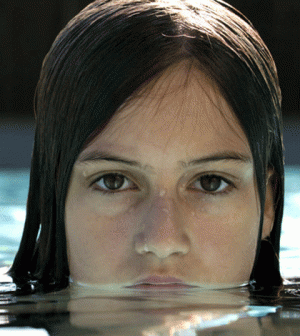- Finding Unshakable Power in a World That Wants to Pull Us ApartPosted 2 weeks ago
- What could a Donald Trump presidency mean for abortion rights?Posted 2 weeks ago
- Financial Empowerment: The Game-Changer for Women in Relationships and BeyondPosted 2 months ago
- Mental Health and Wellbeing Tips During and After PregnancyPosted 2 months ago
- Fall Renewal: Step outside your Comfort Zone & Experience Vibrant ChangePosted 2 months ago
- Women Entrepreneurs Need Support SystemsPosted 2 months ago
Swimming Pool or Cesspool? The Toxic Reality of Public Pools

By Deborah Mitchell | NaturallySavvy.com
When I was a child, peeing in the pool was second on the list of no-no’s right after “don’t go into the water for 20 minutes after eating.” That was several decades ago, and since then some things have changed regarding our understanding of what it means to have a safe swimming experience. As we swing (or swim) into pool season, it’s time for all of us—especially parents—to look at some swimming pool tips.
Although Olympic swimmers admit to peeing while in the water, leaving our urine in a swimming pool is a potential health issue. A report in Environmental Science & Technology, for example, noted that the chlorine in pools combines with urine and sweat to create other substances. These new compounds are typically referred to as DBPs, or disinfection byproducts. Two of those elements are associated with health problems.
One is called trichloramine, which has been linked to acute lung problems. Another substance is cyanogen chloride, which also can affect the lungs as well as the central nervous system and the heart when inhaled. Improperly maintained indoor swimming pools may present the biggest risk for this substance. The study’s authors explained that they have not yet identified all of the components in urine and sweat that are responsible for producing these and other potentially harmful compounds.
For now, however, the experts have definitively determined that a combination of uric acid (which is present in both urine and sweat) and chlorine results in the formation of trichloramine and cyanogen chloride and that the majority of uric acid in swimming pools comes from urine.
Other swimming pool hazards
In a series of three studies appearing in Environmental Health Perspectives, the researchers discussed their findings regarding DBPs in indoor chlorinated swimming pools. In addition to noting that these substances may induce DNA damage (which may lead to cancer) and breathing problems, they also emphasized that people can retain the positive effects of swimming if they reduce the level of chemicals associated with health risks that are used to disinfect pools. If you have your own pool, that is possible, but you have no control over the application of chemicals in public pools.
A study at the University of Illinois College of Agricultural, Consumer and Environmental Sciences focused on outdoor pools. Unlike indoor swimming facilities, outdoor pools are subject to contamination by organic matter such as bird droppings, decaying leaves, and other dead or deteriorating life forms. Outdoor pool users also are more likely to be wearing sunscreen.
The combination of nitrogen-rich sunscreens and cosmetics along with the other contaminants, stirred up with pool disinfectants, can result in a potential health hazard. According to the study, the byproducts can cause gene mutation, induce birth defects, speed up aging, result in respiratory problems, and lead to cancer after prolonged exposure.
In this study, one of the authors, Michael Plewa, University of Illinois professor of genetics, recommended avoiding the use of brominating agents to disinfect pool water. Instead, you should use a combination of ultraviolet treatment and chlorine.
Read more about chlorine and saltwater pools
So, should you and your children boycott swimming pools? Such a dramatic move probably isn’t necessary, but you may want to consider the following, especially for kids:
• Swim diapers and swim pants for small children are not leak-proof. Therefore, children who are wearing these items should be checked every 30 to 60 minutes and changed away from the pool area.
• No one should go into a pool if they feel ill, especially if they have diarrhea.
• Everyone should shower with soap before entering a swimming pool.
• Everyone should rinse with water before re-entering the pool.
• Bathroom breaks should be taken at least every 60 minutes.
• No one should swallow pool water. Naturally it happens, but discuss this issue with children and provide them with water wings and other aids to help them avoid swallowing water.
• To achieve maximum germ-killing power, the free chlorine level in a pool should be 1 to 3 ppm (parts per million), and the pH should be 7.2 to 7.8.
• Commercial pools are required to check chlorine levels every hour. Generally, free chlorine and pH should be checked and adjusted twice a week and more often if the pool is used a lot.
• If you are using a public pool, ask the authorities how often the chlorine and pH are tested and what the values are. Pool test strips are available from most hardware and pool supply stores to test your own or other pools.






